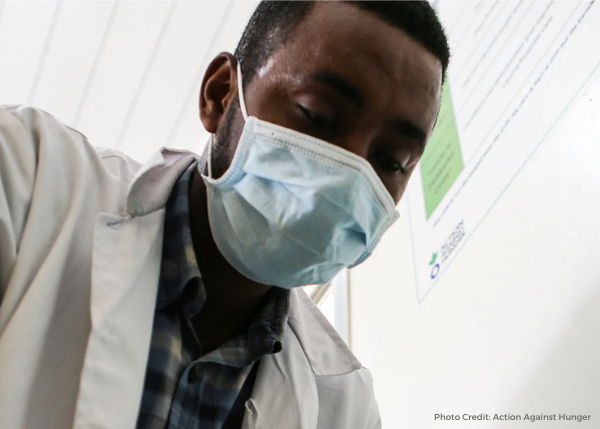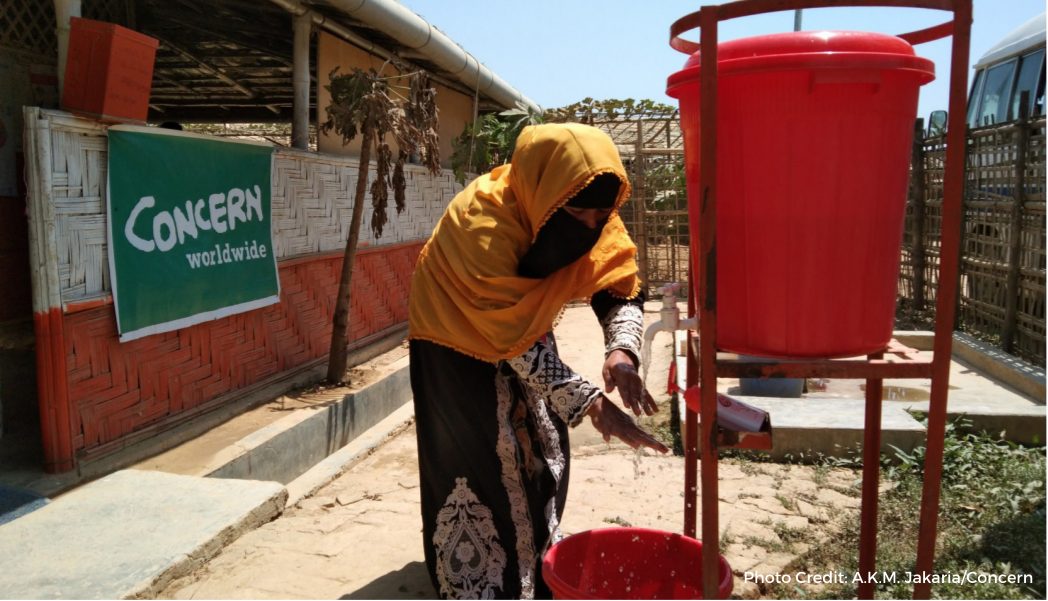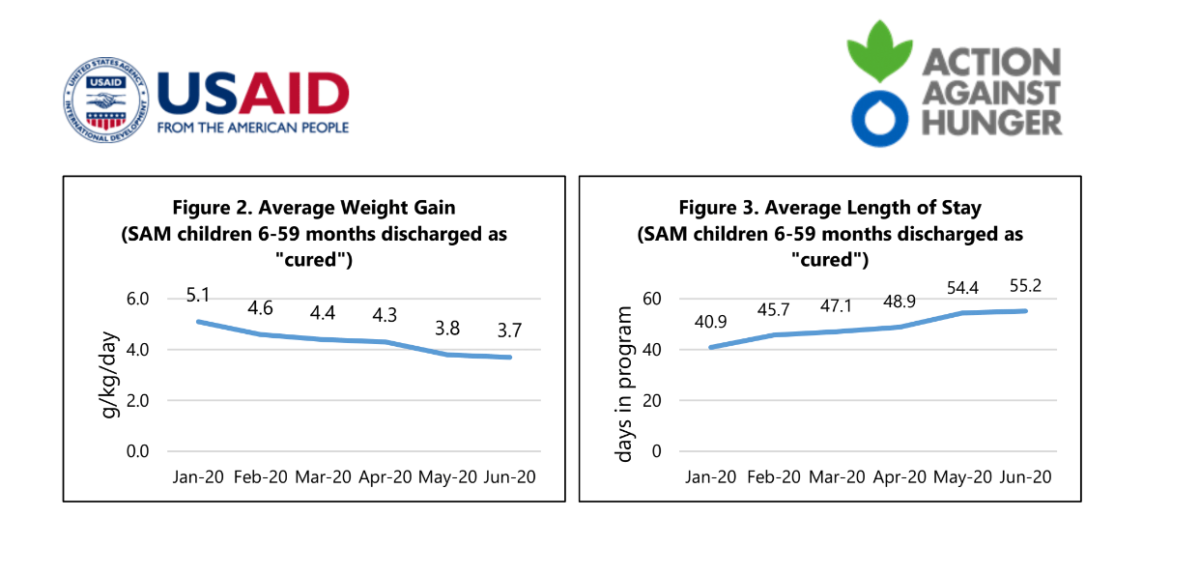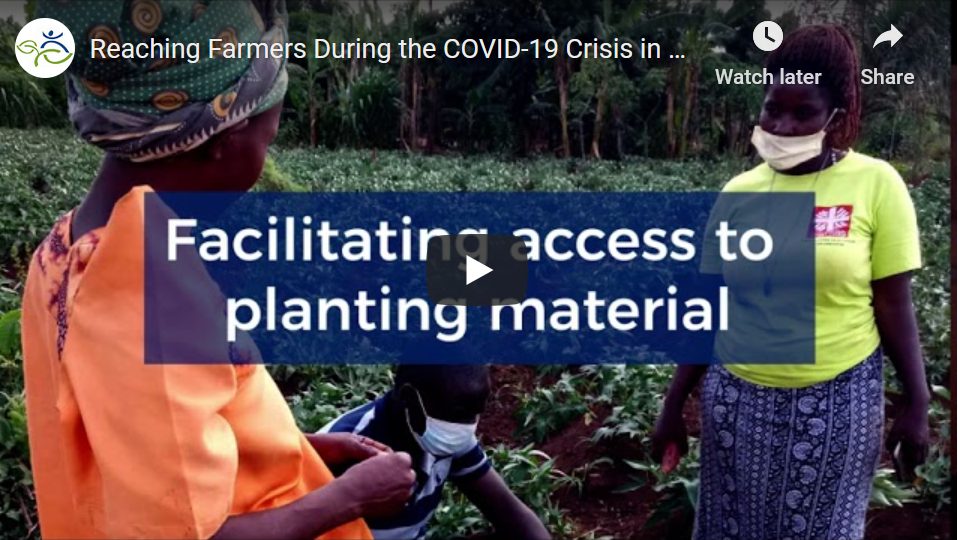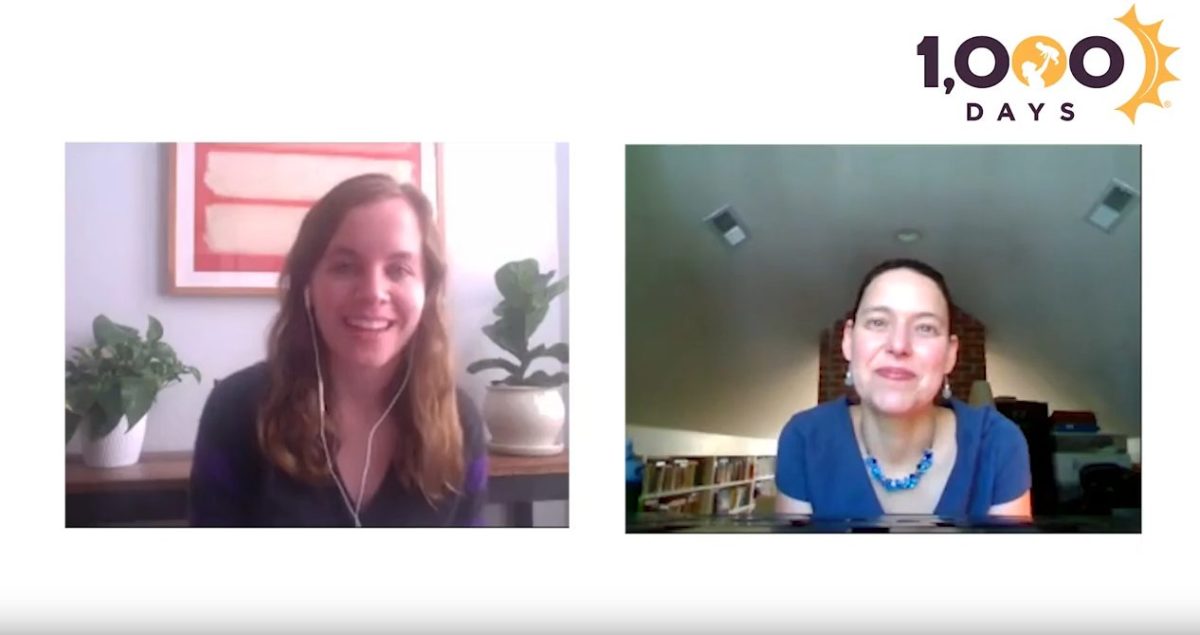We chatted with Vicki Shabo, a Senior Fellow for paid leave policy and strategy with a Better Life Lab at New America about the latest on paid leave. Watch the interview between Nell Menefee-Libey from 1,000 Days and Vicki about paid leave in the context of the pandemic and what families need to keep themselves and their communities healthy right now.
A transcript of the conversation is shared below.
0:02 NELL Q Hello folks. I am Nell Menefee-Libey at 1,000 Days and I am here with Vicki Shabo, a Senior Fellow for paid leave policy and strategy with a Better Life Lab at New America.
0:14 And we’re here to have a quick conversation about paid leave in the context of the pandemic and what families need to keep themselves and their communities healthy right now.
0:26 Vicki, if you can talk a little bit about what kinds of leave people have access to right now to keep themselves healthy.
0:35 VICKI ANSWER Thanks for having me Nell.
0:37 I think 1,000 Days is such a great organization and is such an important part of the wealth of organizations that are fighting for paid leave and for moms and for parents and workers of all kinds.
0:50 This pandemic has really laid bare the challenges that families face, and especially that mom’s face in providing care for their families. And, you know, this isn’t a new issue. Just 20% of the workforce has paid family leave to care for any child or a seriously-ill loved one.
1:11 Just about 40% has access to longer-term paid medical leave for themselves through an employer, provided paid leave, paid short-term disability policy.
1:20 And, even still today, there’s about 20% of workers, more than 20% of workers that don’t have access to a single paid sick day.
1:29 And, each of these types of leave is less commonly available to people who are on the front lines of this crisis: the folks who we’re calling essential workers and the people that have had to show up every day.
1:41 And we’re seeing the ways in which the systems that are around us, whether it’s child care or schools, really serve a key function in terms of the care getting that families need.
1:54 Whether it’s for a child or in the case of adult care.
1:58 And so, the pandemic has really laid bare, the fact that whether somebody has access to paid sick time or any type of paid time off or longer-term paid family leave is really a function of what often is called the Boss Lottery. Whether you happen to be “lucky enough,” and I put that in air quotes, lucky enough to work for an employer or a company that values you enough to give you paid time off and to make sure you have paid time off.
2:23 Obviously now there are big public health consequences, as well as real practical challenges for a family, whether folks are dealing with Coronavirus in their families, or the risk that they’ve been exposed to somebody for their childcare needs.
2:38 And that really spans the range of people and jobs. So this is a long way of answering your question, but I think it speaks to just the sort of patchwork that workers have when it comes to access to paid leave.
2:55 And so it’s impossible to say what somebody has access to, because everyone’s situation is so different.
3:02 There are, there are a few states that have paid family and medical leave programs in place.
3:08 There are a slightly larger set of states and cities that have paid sick time laws in place.
3:15 And the federal government, and I know we’ll talk about this in a bit, but the Federal government for the first time passed a very limited paid sick time and paid childcare leave program for the pandemic.
3:27 And it’s about to expire. … We can talk more about that. But I think it’s impossible to say if somebody, one person might have access to unlimited leave through their employer, but they might feel scared to use it.
3:40 Other folks might not have any time at all, and for months now have been cobbling together care arrangements for a newborn or for an older child or family member. So it’s hard to say.
3:53 But I think the pandemic really just has shown that everybody is sort of forced to figure it out for themselves. And it’s been an unsustainable situation for too long. And we’ve seen how this situation has created a mass exodus of women from the workforce.
4:11 Just in the month of September alone, 865,000 women left the workforce. That was 80% of all people who left the workforce and one of the primary reasons they had to do that is caregiving.
4:23 NELL Q Yeah, exactly. And you mentioned that the federal government did pass some sort of emergency provisions to help out families in this crisis, but they weren’t as broad or didn’t cover as many folks as we originally hoped. Can you expand on that a little bit?
4:41 VICKI ANSWER Yeah so at the very beginning of this pandemic, in March, the middle of March, Congress passed what was called the Families First Coronavirus Response Act.
4:50 And for the first time ever, it included a guarantee of 10 paid sick days for somebody who is quarantining or isolating or seeking a diagnosis for the coronavirus; somebody who has to care for a loved one in that situation; or somebody who needs to care. For a child, who’s out of school or care, then it included an additional … 10 weeks of leave to care for a child who’s out of school … so that parents could have up to 12 weeks at very partial pay.
5:21 But the problem was that this only applied to workers and businesses with fewer 500 employees, which excludes about half of the workforce …
5:32 It also provides exceptions for healthcare workers, or people who worked in healthcare facilities and for emergency responders, where employers could just say, “Sorry, I’m not going to give you this leave.”
5:46 And it included for parents… in particular, for this audience, the ability for small businesses – businesses with fewer than 50 employees – to say, “I’m sorry you can’t use the childcare leave, because it will hurt this business.”
5:59 And the Department of Labor then narrowed this law even more to write very broad exemptions – the health care worker, one, for example, actually was struck down by a court, and D.O.L. needed to revise it.
6:11 And it included very limited definitions of when somebody could invoke their right to use this.
6:18 And again, it doesn’t cover workers in larger companies and so that means that the grocery workers and fast-food workers, and Wal-Mart … and Target and Amazon, all of these folks who have again been the ones who have been essential to … everyone who has been working from home like we are.
6:37 Their ability to keep going, it’s really created a big problem and it’s created public health risks that have exacerbated this pandemic. It’s just one further example of the ways in which we really haven’t had a cohesive and effective response to the virus here.
6:55 NELL Q Yeah, and the patchwork creates a difficult situation where people don’t know what they have access to, or what they are entitled to under the law. … So technically, even people who have leave are not in a position to take it.
7:10 Yes.
7:11 VICKI ANSWER And I’m so glad you brought that up, because one of the other big problems was that the Department of Labor did some FAQs for employers and employees, but really didn’t do much outreach or education. And so, as a result, there’s some research that shows that fewer than 50% of workers knew about, or thought that they were eligible for this leave.
7:30 There’s some preliminary evidence that the businesses who were able to seek reimbursement from the government are providing this leave didn’t actually claim the credits or haven’t claimed credits at the rate that was expected. And so there are questions about (whether) employers are providing this. Are they not applying for the reimbursement? Do workers not know that they’re eligible for this leave?
7:54 Then there are just… the stories of people who have been denied and you know this is again a real problem from the caregiving perspective, from a health perspective and from a family well-being perspective.
8:08 NELL QUESTION Yeah. And we know that it’s the health of families that really takes the hit for congressional inaction.
8:14 NELL QUESTION And clearly, this isn’t sustainable. Obviously, 1,000 Days has been advocating for comprehensive paid family and medical leave for a long time, as have you clearly. So as Congress debates further action in response to the pandemic, what are some provisions that you’re hoping to see?
8:33 Yeah, first and foremost, these emergency provisions that I described expire on December 31st.
8:40 Now, that may have been a reasonable goal back in March when nobody knew how long this would drag on or how … ineffective the government’s response would be.
8:56 But it’s obviously not a reasonable end date to end the need for paid sick time or paid leave.
9:04 We’re heading into a winter that …we’re seeing unprecedented illness rates, and we’re seeing death’s rising again. Schools are still on hybrid.
9:15 Our virtual schedules, the child care industry is really suffering and needs investment very, very quickly, otherwise, childcare slots are going to permanently disappear. So this is something that needs attention immediately.
9:31 Of course, Congress has not passed another relief bill despite efforts to try to do that since May. But what was included in the Heroes Act, which passed the House in May and passed the House again this Fall, was a provision to expand and extend … this emergency leave.
9:51 So, instead of having the carve outs that I talked about, the large business carve out, and the different exemptions for categories of workers, the law would apply to all workers in all in all types of workplaces.
10:04 It would continue to apply to self-employed people, which I didn’t mention before, but it’s a really important provision.
10:11 It would apply in a greater variety of circumstances for 12 weeks.
10:15 So both for those short-term paid sick days that somebody might need just to figure out whether they’re sick, or for longer-term family and medical leave, which as we’re seeing people who do get, get the virus often have longer-lasting effects and may need more time off.
10:30 It would apply to people who are caring for an adult whose place of care is closed or unsafe, as well as for a child whose place of care is closed or unsafe. It improves on the wage replacement, that’s offered for the family caregiving, which the original bill made too limited and maybe part of the reason why people aren’t able to use the leave that’s provided.
10:51 But, this is the first thing that needs to happen: to expand and extend these emergency provisions, at least through the end of 2021.
10:58 Then, what needs to happen is that it’s way past time for this country to adopt a permanent paid family and medical leave policy, and a permanent standard of paid sick days. The election outcomes, as we’re speaking, (are) still sort of up in the air with respect to Congress.
11:16 However, these are common-sense policies. They have overwhelming bipartisan support among the public for …years.
11:25 And this pandemic has just shown that we weren’t prepared for the health, economic, and caregiving challenges, and creating a national Paid Family Medical Leave Program with guaranteed access to paid sick time, building on what States and cities have done, really needs to be a critical priority for the next administration and Congress …
11:47 NELL QUESTION And the pandemic has also really revealed that the families that are already in the most precarious situations are the ones who suffer the most from these consequences.
11:57 Absolutely. Yeah, I actually just did some analysis in 10 years of Bureau of Labor Statistics data looking at how access to Paid Family Leave has increased from 2010 to 2020.
12:10 And what I’ve found was that, overall, there was a 10% point increase in access, from 10%, to 20% of workers, which of course is completely inadequate. For the lowest-wage workers, access only increased by 2 percentage points, from 3% to 5%.
12:26 For the average worker, it will take until 2100 to have access to Paid Family Leave if we don’t do anything based on that rate of change. And for the lowest-wage workers, obviously, it’s going to take much, much longer for that. So, we can’t wait any longer the inequalities that exist in access to paid leave and paid sick time by race, by job type and by income level are completely unsustainable and… bad for health, bad for economic security, bad for poverty, bad for self-sufficiency.
13:01 It’s really a lose-lose situation that we’re in on this issue as … so many other priorities that are important for families for their health and their well-being.
13:13 NELL CLOSE Great, well, thank you so much for taking the time to chat, Vicki. I really appreciate it.
13:18 Yeah, it’s been great to chat with you today.



